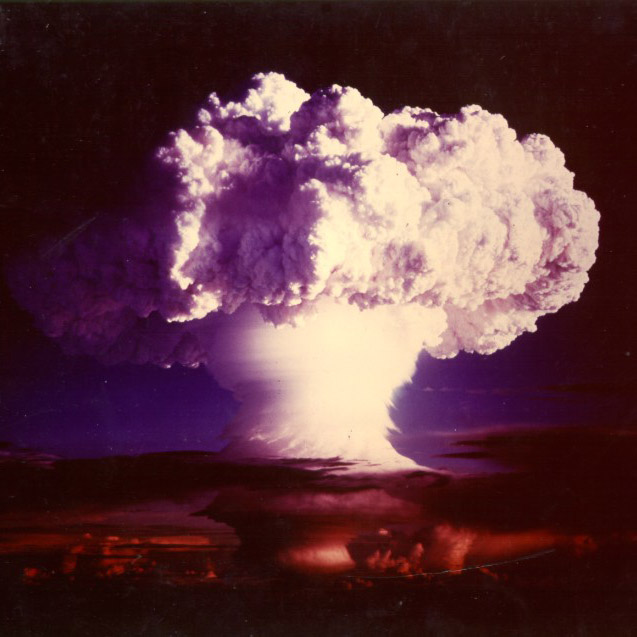アインスタイニウム
99
Es
族
該当なし
周期
7
ブロック
f
陽子
電子
中性子
99
99
153
一般特性
原子番号
99
原子量
[252]
質量数
252
カテゴリ
アクチノイド
色
該当なし
放射性
はい
Named after Albert Einstein
結晶構造
該当なし
歴史
Einsteinium was discovered as a component of the debris of the first hydrogen bomb explosion in 1952.
It was identified by Albert Ghiorso and co-workers at the University of California, Berkeley in collaboration with the Argonne and Los Alamos National Laboratories, in the fallout from the Ivy Mike nuclear test.
The new element was produced by the nuclear explosion in miniscule amounts by the addition of 15 neutrons to uranium-238.
It was identified by Albert Ghiorso and co-workers at the University of California, Berkeley in collaboration with the Argonne and Los Alamos National Laboratories, in the fallout from the Ivy Mike nuclear test.
The new element was produced by the nuclear explosion in miniscule amounts by the addition of 15 neutrons to uranium-238.
電子殻
2, 8, 18, 32, 29, 8, 2
電子配置
[Rn] 5f11 7s2
Einsteinium is the first divalent metal in the actinide series
物理特性
相
固体
密度
8.84 g/㎝3
融点
1133.15 K | 860 °C | 1580 °F
沸点
-
融解熱
該当なし
蒸発熱
該当なし
熱容量
-
地殻中における存在比
該当なし
宇宙空間における存在比
該当なし

画像の出典: Wikimedia Commons (National Nuclear Security Administration)
Einsteinium was first observed in the fallout from the Ivy Mike nuclear test
CAS登録番号
7429-92-7
PubChem CID番号
該当なし
原子特性
原子半径
-
共有結合半径
-
電気陰性度
1.3 (ポーリングの値)
イオン化エネルギー
6.42 eV
モル体積
28.5 ㎝3/mol
熱伝導率
0.1 W/㎝·K
酸化数
2, 3
用途
Einsteinium is mainly used for scientific research purposes.
The rare isotope einsteinium-254 is favored for production of ultraheavy elements.
Einsteinium-254 was used as the calibration marker in the chemical analysis spectrometer of the Surveyor 5 lunar probe.
The rare isotope einsteinium-254 is favored for production of ultraheavy elements.
Einsteinium-254 was used as the calibration marker in the chemical analysis spectrometer of the Surveyor 5 lunar probe.
Einsteinium is harmful due to its radioactivity
同位体
安定同位体
-不安定同位体
240Es, 241Es, 242Es, 243Es, 244Es, 245Es, 246Es, 247Es, 248Es, 249Es, 250Es, 251Es, 252Es, 253Es, 254Es, 255Es, 256Es, 257Es, 258Es